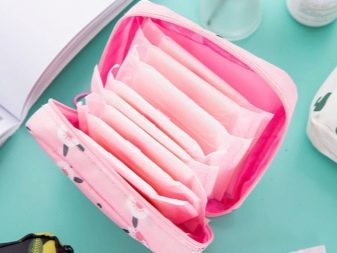Varieties of gaskets and their choice

Sanitary pads are an accessory that every woman must have in her arsenal. In this article, we will dwell in more detail on the recommendations for the selection of women's pads for various purposes. Having learned about all their advantages and disadvantages, you can make the right choice and not get confused in the variety of offers.
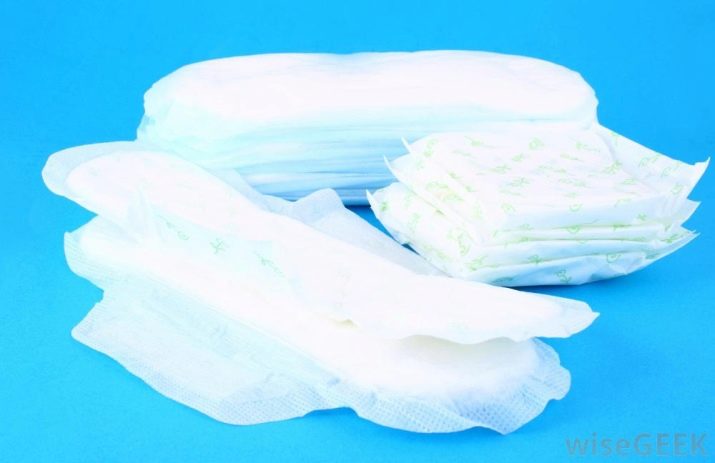
What it is?
In today's fast paced world, it can be difficult to abandon goods that can make our lives easier. Feminine sanitary pads are no exception. The assortment offered by the manufacturers is so wide that it can satisfy any need in a wide variety of situations.
Most often, women use pads during their periods. In this case, they are needed in order to absorb bloody discharge and thus protect clothing from contamination. Pads allow ladies not to change their lifestyle - girls and women can safely continue playing sports, travel and wear light-colored clothes.

In addition, many hygiene products have antibacterial properties and prevent the growth of pathogenic microflora.
The design of any gasket, regardless of its purpose and manufacturer, looks the same.
Synthetic upper layer. It comes in contact with the skin and prevents irritation. As a rule, it has a rectangular shape with a longitudinal arrangement. In some models, the outside is covered with an oilcloth mesh or fabric cloth, they are made of soft hypoallergenic material.
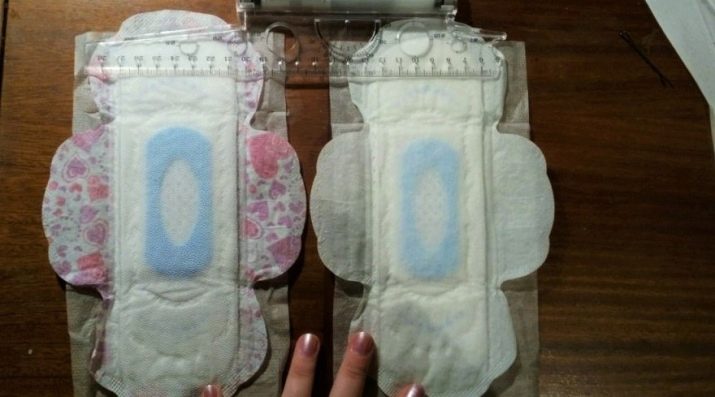
Inside contains a special gel-like substance that retains moisture and thus prevents leakage problems. Usually this component has a neutral chemical composition.
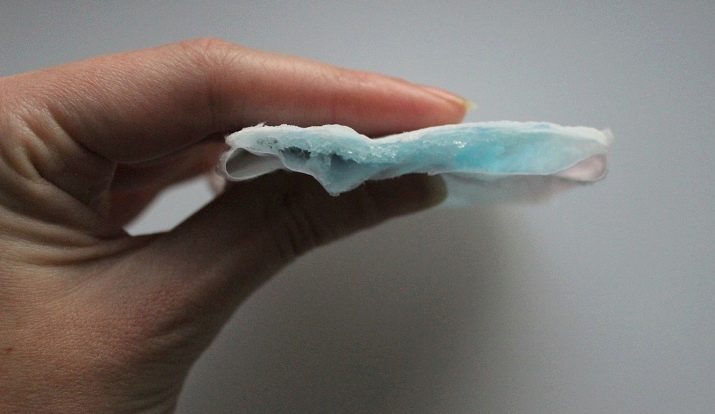
The bottom surface is made of an adhesive material. A special component is applied to it, providing a strong adhesion to underwear. This is important for further fixation without possible displacement with the risk of leakage.
In addition, the lower part is made of oilcloth, which, even with the maximum filling of the gel layer, prevents the contents from being drawn out. In some cases, the gaskets have wings that complement the leakage protection due to misalignment of the article.
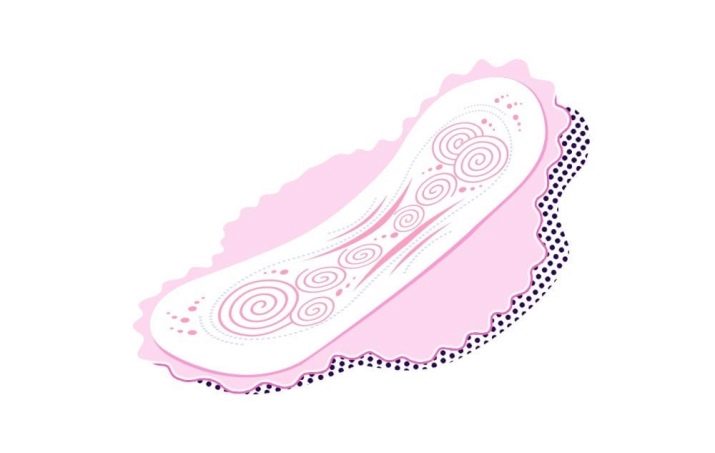
History of appearance
The history of gaskets is rooted in the distant past. The first mention of the use of objects that alleviate the condition of a woman during menstruation dates back to the time of Cleopatra. At that time, the use of natural materials, most often tree leaves, became widespread. So, in ancient Egypt, papyrus was used, and in other places other plants were used.
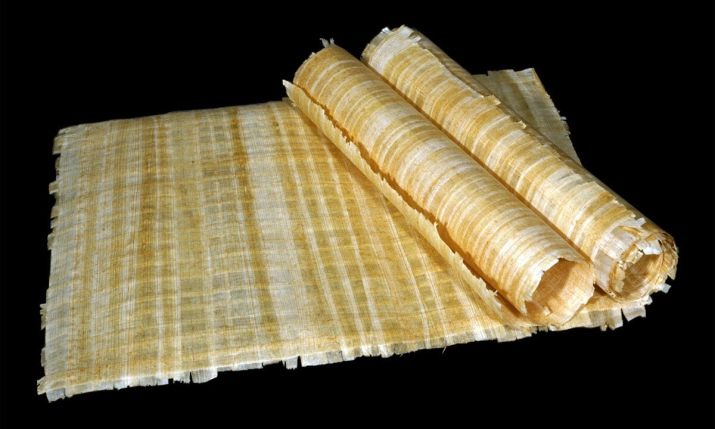
Only many centuries later, women adapted to use petticoats - they simply inserted them between their legs. In the modern sense, gaskets appeared in the twentieth century. Then they were tissue napkins, they were placed in the perineal area on the days of menstruation. These products were reusable, so they were washed after each use. In the USSR, women continued to use napkins or pads with cotton-gauze filling.

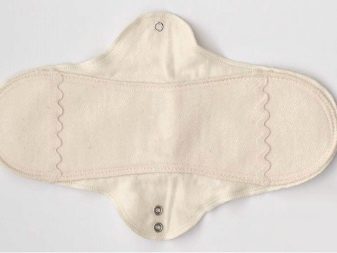
A leap forward in the development of hygiene products came after the end of the First World War. At that time, scientists developed means of synthetic origin, the principle of which was based on the absorption of blood - they were used in the event of severe injuries to soldiers during military operations. Soon, nurses in France found a more "peaceful" use for the material and suggested using it to protect against blood secretion. From that moment, mass production of gaskets began in Western countries.
Of course, their appearance and function were far from ideal. Despite this, they became an important milestone in the development of feminine hygiene products.
Gaskets appeared in commercial enterprises, but women were embarrassed to buy them. To minimize discomfort, manufacturers were forced to pack them in unmarked bags. After this, a much larger number of women began to acquire products. Nevertheless, for many of them, such an item was not at all disposable, so the hygiene rules were not properly followed. In the USSR, women continued to use gauze and cotton wool.
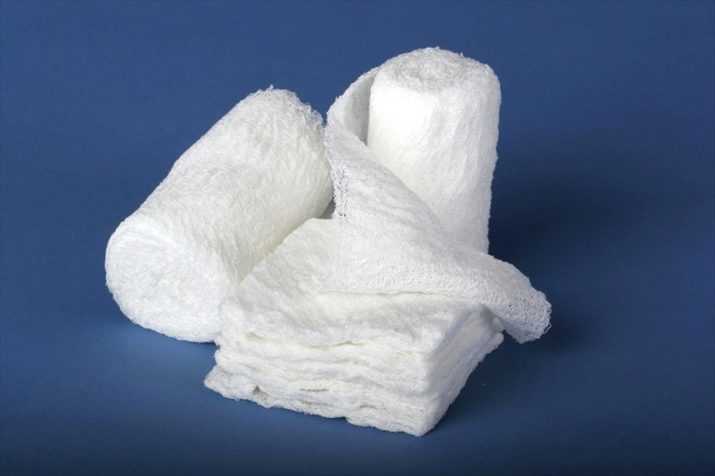
But in Asian countries, these devices appeared quite a long time ago, and they were made from natural materials. The prevalence of pads was also higher, as women were already accustomed to the fact that it is a one-time item. For a long time, there were no innovations - the gasket only changed in shape and size.
A significant leap forward in the development of feminine hygiene products was achieved in the 80s of the last century. A wide variety of new formulations have appeared, allowing not only to absorb a significant amount of blood, but also to eliminate the unpleasant odor and not cause irritation on the skin. Nowadays, a wide selection of pads is presented on the market: they can be hygienic, postpartum, urological, daily. They are distinguished not only by the purpose and absorption parameters, but also by the form and manufacturing technology.

Views
Modern manufacturers produce different types of gaskets. They come in cotton and organic, day and night, thin and thick, odorless and odorless. Most often they are made white, but the most expensive brands can have a pink tint. Depending on their purpose, they are divided into several groups.
- Classic - used to absorb bleeding during menstruation.They are realized in the form of thickened (from 1 to 2 cm) and thin (up to 1 cm) models.

- Urological - are intended for use in cases of urinary incontinence of various degrees, as well as after childbirth in case of a temporary weakening of the tone of the bladder.
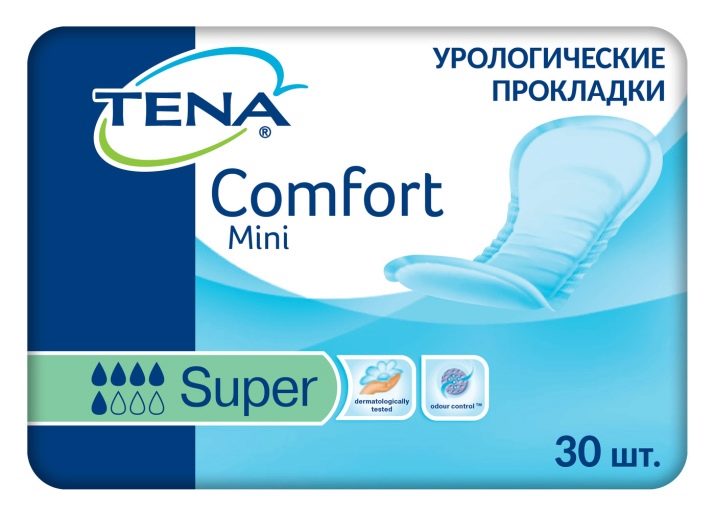
- Therapeutic - they are distinguished by a surface saturated with oils and extracts of medicinal plants. They are used as an adjuvant in complex therapy for gynecological diseases.

- Anionic - eco-pads, have the property of suppressing pathogenic microflora due to the production of negatively charged ions.
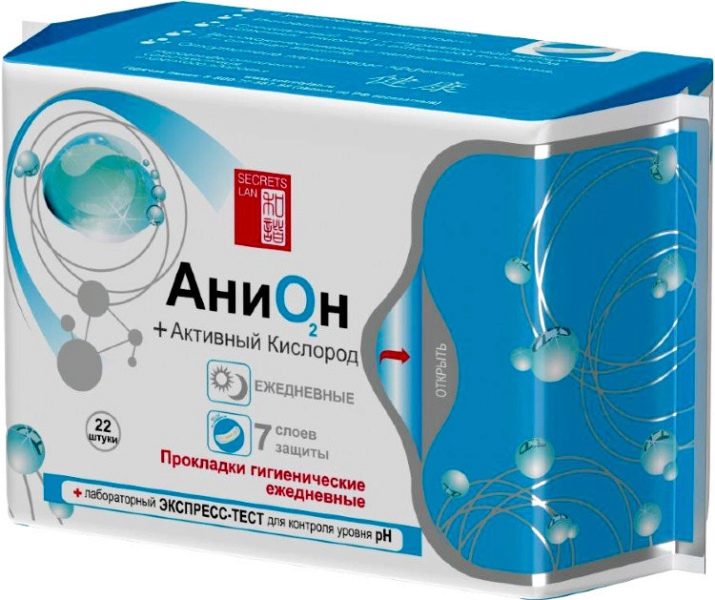
- Daily - are optimal for use in the first and last days of the cycle, as well as to prevent secretions from getting on clothes in case of thrush and some other female diseases.
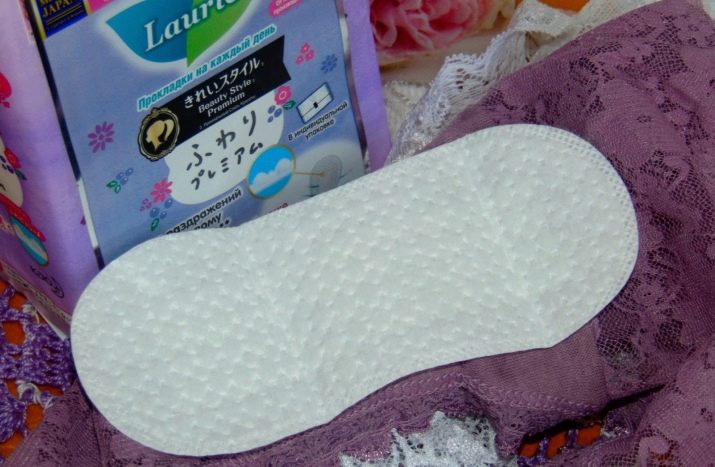
- Test pads - are needed to quickly detect the leakage of amniotic fluid before childbirth, such products change their color to blue.
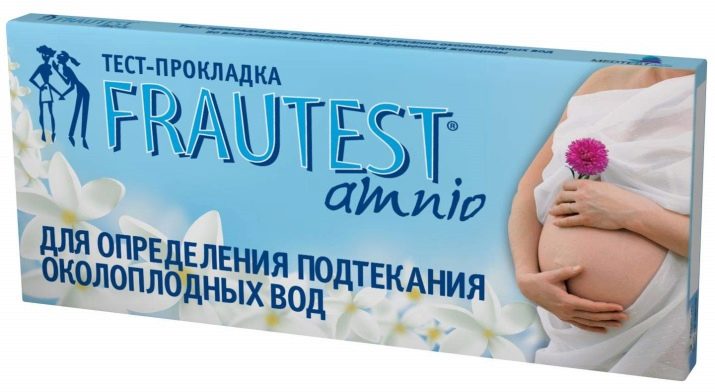
- Postpartum - the best option for a maternity hospital. They have a pronounced antimicrobial effect. Also used after gynecological operations.
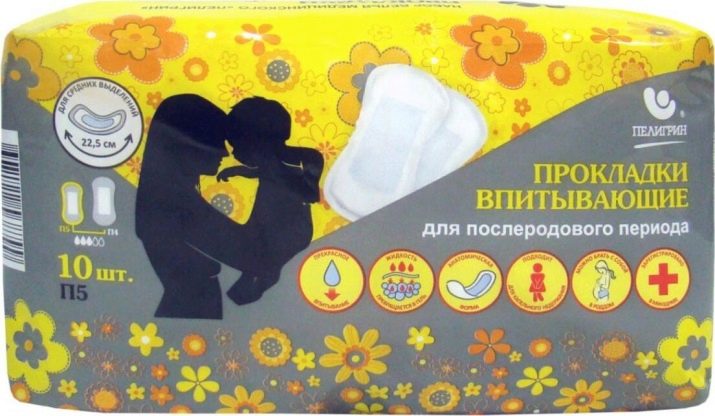
The best manufacturers
We invite you to get acquainted with the rating of the most reliable women's pads, compiled taking into account customer reviews.
Among the dailies, the most advantageous from the point of view of price / quality are the ones listed below.
- Bella Panty soft 1.5 - hygiene products for everyday use. They reliably protect against leaks, provide a feeling of freshness throughout the day. The outer layer is made of a soft, thin non-woven material, an additional level of comfort is provided by a protective laminate with vapor permeability. There are no disadvantages.
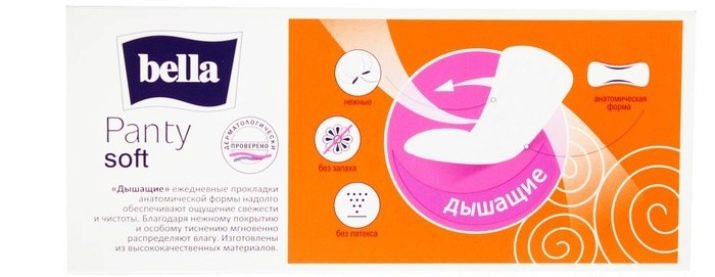
- Libresse DailyFresh MultiStyle - ultra-thin pads. Their thickness does not exceed 0.6 mm with a degree of absorbency of 2 and 2.5 drops. Packed in 20 and 60 pieces, can be used for any type of underwear. The top layer is reinforced with components based on lactic acid, due to which an optimal pH balance is maintained in the intimate area. Products are flexible and soft, they repeat the basic anatomical features of the female perineum. There is only one drawback - they stick to the skin.
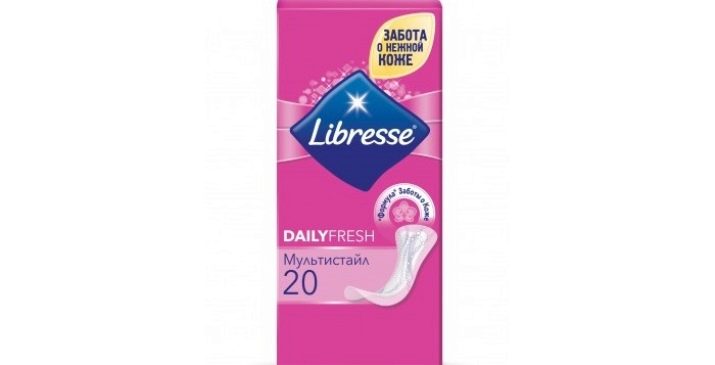
- Discreet Deo irresistible Multiform - The thinnest pads with high absorbency. The thickness is less than 1 mm, but in spite of this thinness, the daily routine retains its freshness for up to 10-12 hours. They have a lace design and a slight jasmine scent. Suitable for all types of laundry, provide a firm hold. Dermatologically approved, no downsides found.
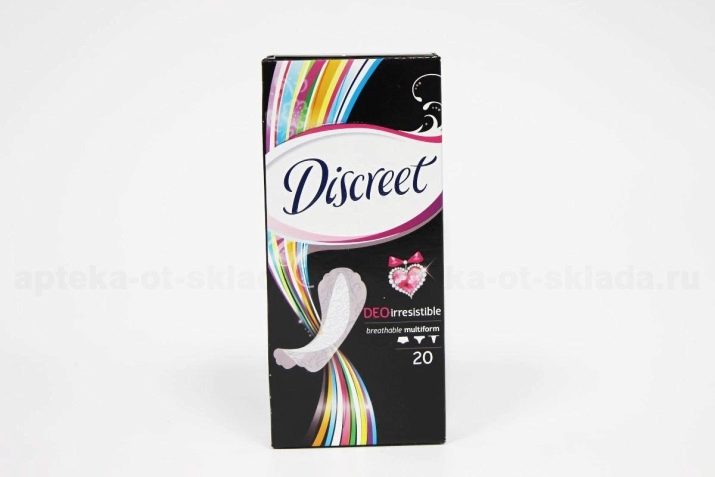
- Ola! Daily Deo Velvet Rose - panty liners with the second degree of protection. Flavored, firmly adheres to linen, thus ensuring long-term hygiene and freshness. Optimal for use during scanty secretions. An unobtrusive rose scent creates additional freshness and comfort.

In the TOP of menstrual pads, users have included the following types.
- Kotex ultra night - ultra-thin hygiene products with the sixth degree of absorbency. A good choice for copious bleeding. Length - 8.5 m, surface - mesh. They are distinguished by an effective system of fast absorption. For maximum comfort, padded wings are provided for additional hold on the linen.
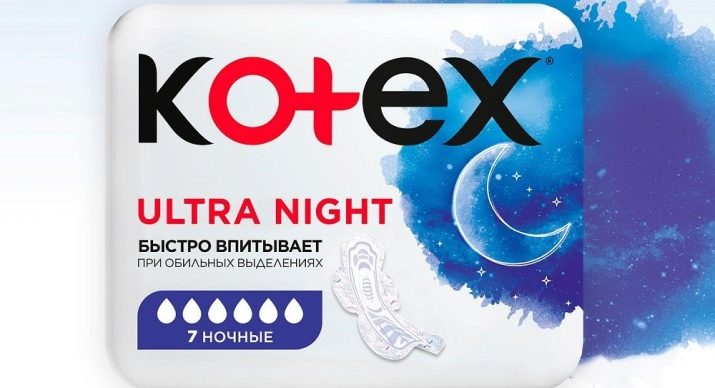
- Secrets Lan Anion + O2 - it is a 100% cotton product, it is distinguished by an anion layer with tourmaline thread and a high-molecular absorbent. The degree of protection against leaks is the seventh. The gasket suppresses pathogenic microorganisms, restrains the spread of unpleasant odors, and the active oxygen in the gel provides high vapor permeability.

- Bella perfecta ultra night - ultra-thin mesh pads for the sixth degree of protection. They are only 2 mm thick, making them virtually invisible during use. The product anatomically follows the contours of the crotch, is firmly fixed on the linen and prevents leakage on the sides.
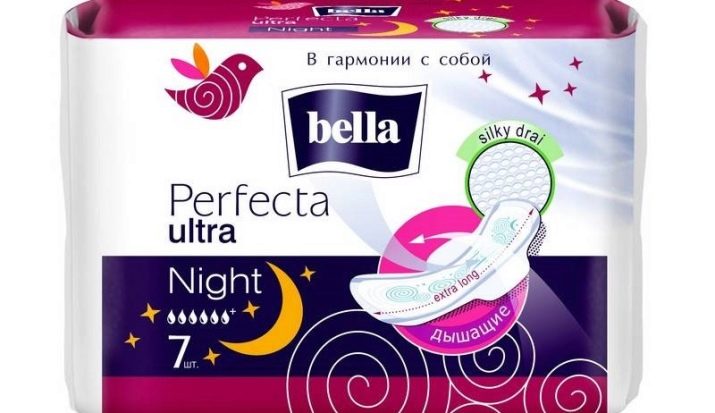
The material is soft, hypoallergenic, breathable, so irritation and inflammation in the intimate area are completely excluded.
- Secrets Lan Healing Oils - Menstrual pads with a fourth level of protection on a cotton basis. They are used for normal discharge. The surface is impregnated with clove, sesame and lotus seed oil. These components provide powerful antiseptic and antimicrobial effects.
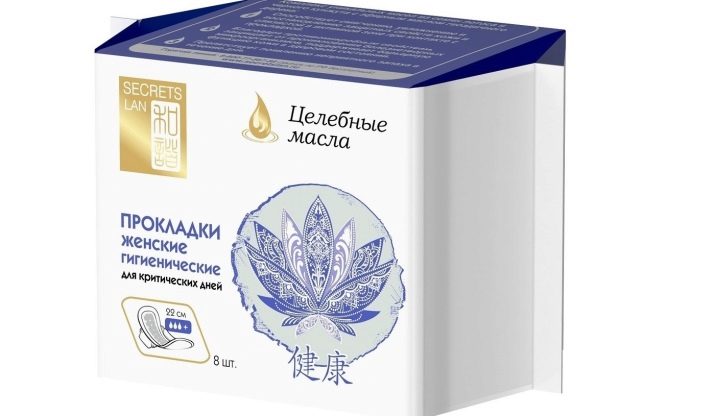
- Naturella ultra maxi - an option so as not to worry and feel confident these days. The top layer material guarantees excellent absorption. The edges of the edges, reminiscent of flower petals, protect against leaks. The delicate scent of chamomile prevents unpleasant odors. Naturella Classic Normal pads also have similar good characteristics.
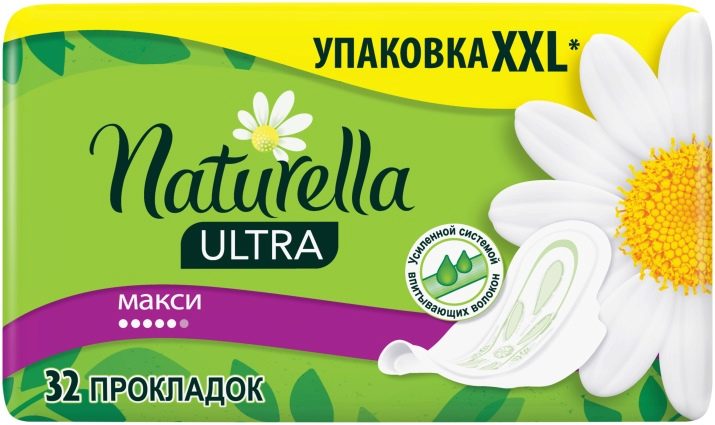
Among the best urological pads, the product of Seni Lady Super is distinguished. These products are designed to provide leak protection for mild to moderate urinary incontinence. They differ in anatomical shape, provide a secure fit to the body. They contain an antibacterial superabsorbent that suppresses unpleasant odors.
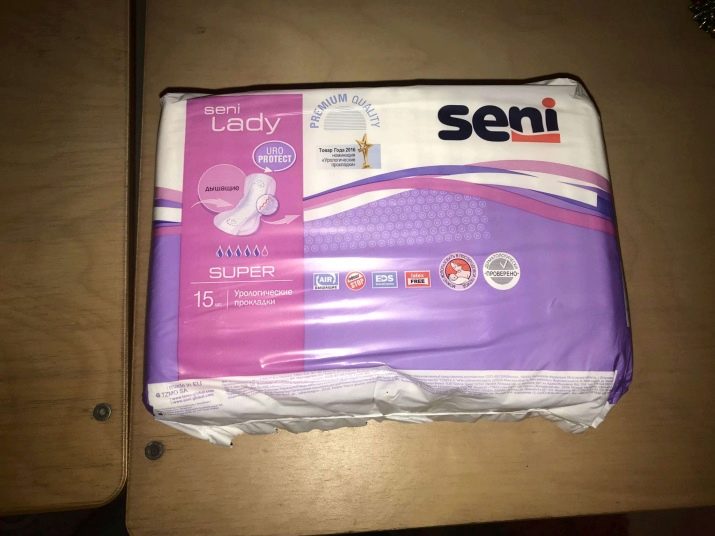
The most reliable postpartum pads are considered to be super absorbent Canpol Babies. They absorb bloody discharge as much as possible and neutralize unpleasant odors. Usually used with tight-fitting underwear.
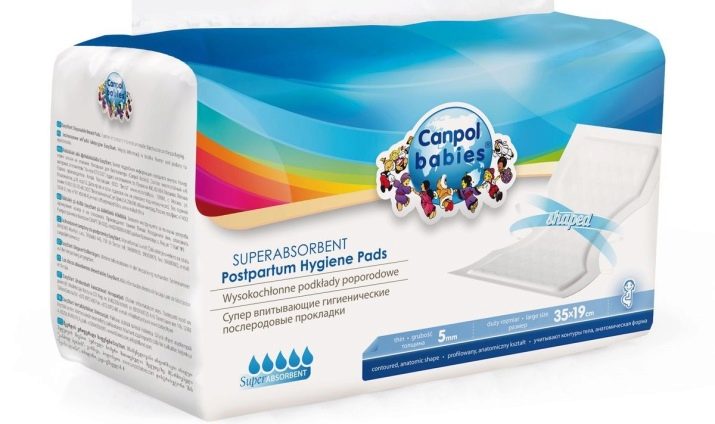
Nuances of choice
In order to select the optimal gaskets, basic quality criteria should be considered.
Package
Manufacturers offer hygiene products in plastic and cardboard packaging. The best option is polyethylene, as it is characterized by moisture resistance, density and durability. Ideally, each spacer should be additionally hidden in an individual packaging - a compact sealed envelope.
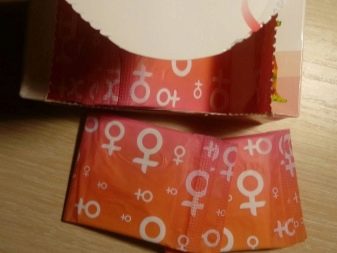
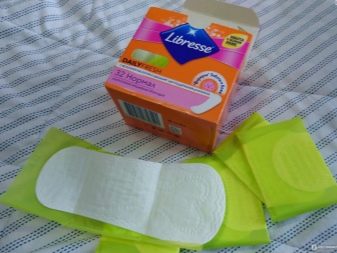
Such products are convenient to carry in a purse. They do not attract attention to themselves and at the same time completely exclude contact with the environment.
Scent
An important task of sanitary napkins is to neutralize and prevent the appearance of strong odors. For this, the pads are often scented, usually using the smells of rose and chamomile. Ideally, the smell should be subtle. Some items are sold without additional scent. In this case, the neutralization of unpleasant odors is carried out at the expense of the middle layer. It converts the bloody liquid into a neutral gel.
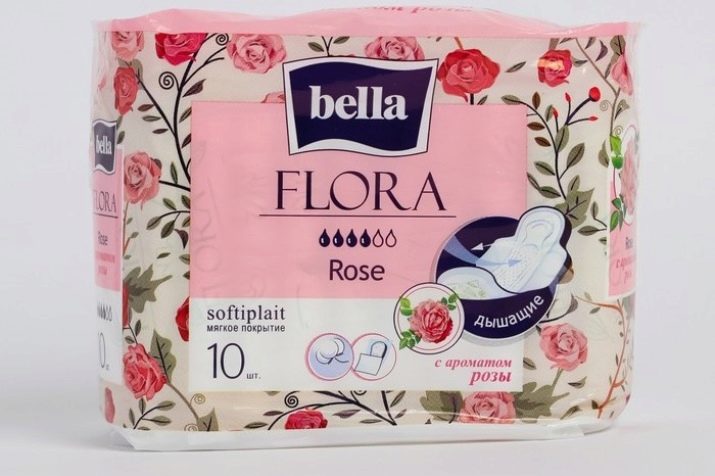
Degree of protection
For the most accurate selection of feminine hygiene products, a whole system for determining the absorbency of menstrual pads is provided. Schematically, it is indicated in the form of droplets - this greatly facilitates a woman's choice based on the volume of physiological secretions:
- 3 - for scanty secretions;
- 4 - normal;
- 5 - abundant;
- 6 and 7 are for use during a night's sleep.
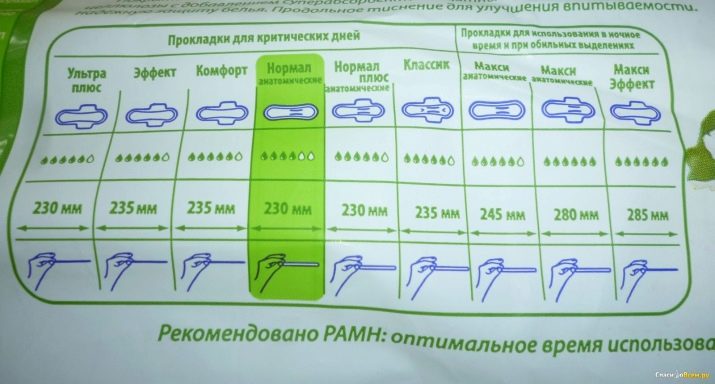
The security parameters are also influenced by additional design features of the product.
- Wings - securely fix the gasket, reduce the risk of its displacement and prevent leakage.
- Velcro - ensure the fixing of the product on the linen. For a high-quality gasket, the glue base should be completely natural, made with the addition of starch.
- Anatomical configuration - most reliably provide protection against leaks of the product, repeating the outlines of the female body.
- Bumpers - slightly noticeable elevations on the sides. The gaskets prevent side leaks in case of heavy filling.
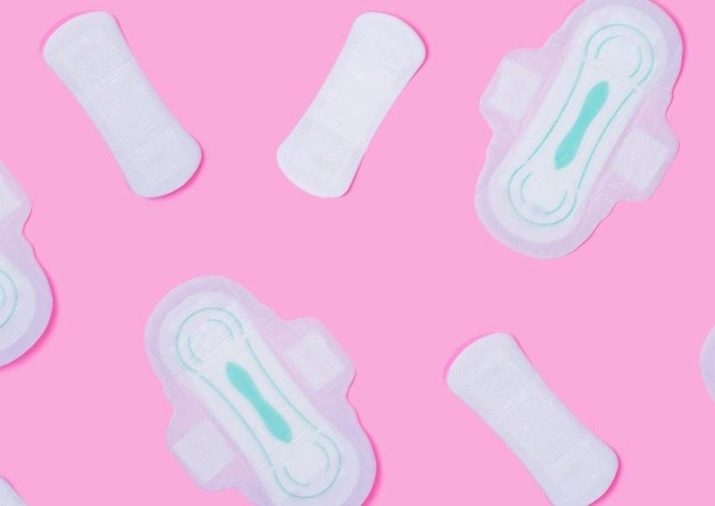
Manufacturing materials
When choosing a hygiene product, the following rules should be taken into account.
-
Focus on the type and characteristics of the outer layer. It can be mesh or soft. The first solution provides an increased level of absorbency, the second provides protection for women with sensitive skin.
-
The degree of breathability. Products made from vapor-permeable materials maintain comfort in the intimate area.The appearance of diaper rash and a pungent odor is 100% excluded.
-
Quality pad materials for daily use. Products made with the addition of chamomile have gained the maximum popularity. They belong to natural antiseptic products, maintain comfort and long-term freshness.
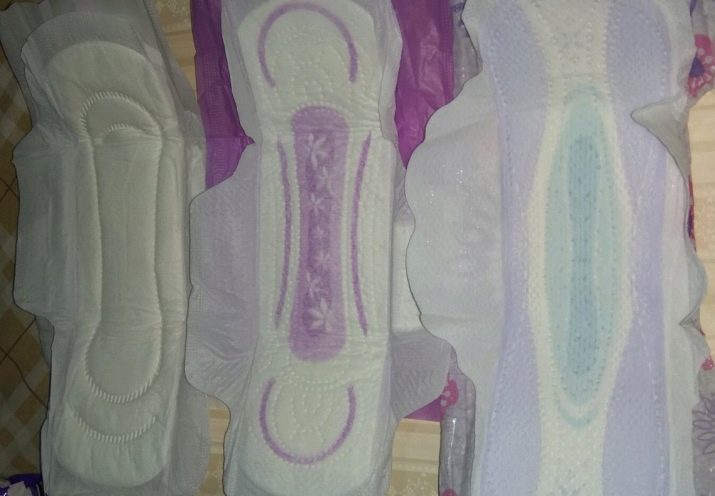
Usage Tips
When using gaskets, the following rules should be followed.
- Use gaskets only for their intended purpose.
- You cannot use menstrual pads for prophylactic purposes or for every day, as this causes inflammation in the genital tract.
- Change the pad in time: hygienic - as you fill, daily - after each urination. All types of pads should be replaced after a bowel movement.
- It is also required to replace the gasket with a new one immediately after waking up, even if there was no release of the contents during the night.
- It is advisable to use an organizer to store the spacers. It is also important to consider their expiration date.
